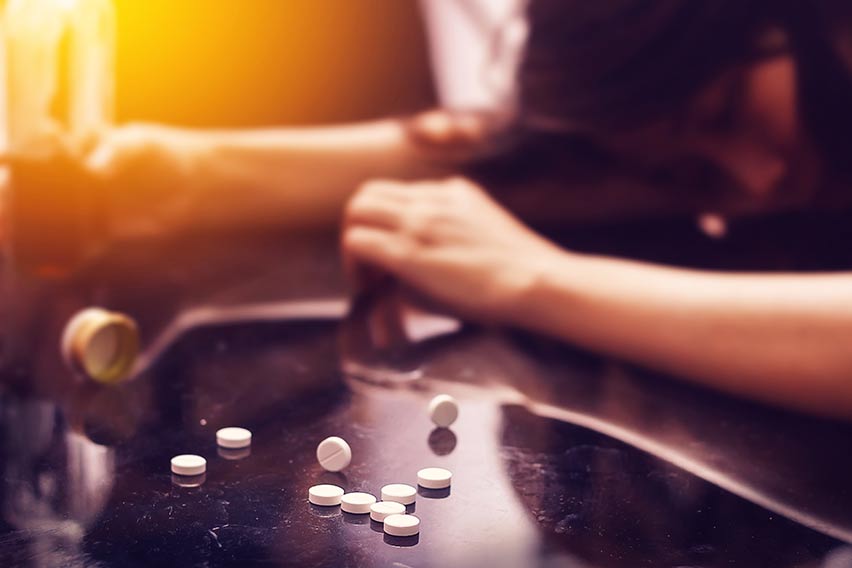Opioids are a classification of narcotics that include both prescription painkillers and illicit street drugs like heroin and fentanyl. Drugs like tramadol, oxycodone, fentanyl, morphine, and hydrocodone may be prescribed for people dealing with chronic illnesses or serious injuries or following any invasive surgical procedure.
Heroin, fentanyl, and other illicit opioids are often used by people as a means for self-medicating physical or psychological pain, or when they are no longer able to obtain prescription opioids legally. Opioids are highly addictive. They are also incredibly dangerous when taken in high doses. When too much of an opioid is used, fatal overdose can occur.
Opioids directly affect the portion of the brain that controls a person’s breathing. During an overdose event, a person’s respiration will decline, and their skin may look blue-tinged and feel cold. Getting medical help for any opioid overdose is incredibly important.
The symptoms of opioid overdose are unlikely to abate on their own. Moreover, as they progress, the overdosing person can stop breathing entirely, or they may experience brain damage or brain death.
What is an Opioid Overdose?
Opioids stimulate the brain’s opiate pathway. This promotes relaxation, euphoria, and pain relief, but it also has the negative effect of suppressing the respiratory system. Although people feel more relaxed when getting high on opiates or using them for pain relief, their heart rates slow, and their breathing becomes shallow.
Overdoses occur when stimulation of the opiate pathway is prolonged and unopposed. High doses of opioids make people feel extremely relaxed, but the relaxation of basic and essential respiratory functions becomes extreme as well.
During an opioid overdose, as oxygen delivery decreases, the skin grows cold, and the individual becomes more confused and disoriented than normal. Surprisingly, many opioid overdoses are unintentional. Sometimes people overdose by mistakenly taking more of their medications than they’re supposed to.
When purchasing illicit opioids or street drugs, determining what is an acceptable or “safe” dose is a blind and incredibly high-risk effort. Opioid overdose is most likely to occur with illicit fentanyl. As a synthetic opioid, fentanyl can be 50 to 100 times more potent than morphine.
Why Does Overdose Happen
Using opioids with alcohol greatly increases the risk of opioid overdose. Much like opioids themselves, alcohol can also depress the respiratory system. Not only does this elevated risk exist when alcohol and opioids are used together simultaneously, but it’s also extremely high when people use time-released opioids.
There are actually many possible causes of an opioid overdose. Anyone who uses opioids in any capacity should be aware of them. Overdose can occur when:
- Underestimating the potency of street drugs like heroin or fentanyl
- Taking someone else’s prescription opioids
- Mixing opioids with alcohol or other medications
- Experiencing dramatic changes in liver or kidney health
One of the most common risk factors for opioid overdose is a relapse in addiction recovery. People who have used opioids for years may return to opioid use expecting their bodies to have the same level of tolerance to these substances. After months or even just weeks of abstaining, tolerance levels will have declined considerably.
Aging adults who are having a hard time managing their medications on their own due to changes in cognition or memory loss are at an especially high risk of overdose when taking opioids. Children who are given opioid-containing medications that they have not been prescribed to them have a very high likelihood of overdosing as well.
Risk Factors for Opioid Overdose
Given the extremely high potency of opioids, the risk for overdose exists no matter how these drugs are used or taken. In fact, even a person receiving medically assisted treatment (MAT) for opioid addiction is at risk of overdose. For instance, if a patient relapses and chooses to use illicit opioids in addition to the drugs provided in MAT, overdose will likely occur. As such, taking methadone as part of addiction treatment can be considered a risk factor.
Just as alcohol can depress the respiratory system by stimulating certain changes in brain functioning and brain chemistry, benzodiazepine drugs or benzos have a very similar effect. Taking benzos and opioids together in any quantity is a recipe for disaster. Other risk factors include:
- Depression and other mood-related or mental health disorders that cause suicidal thoughts and tendencies
- High prescription opioid doses
- Age-related memory loss
- Dramatic changes in body weight
and antidepressant co-prescribing of any type.
Signs of an Opioid Overdose
People who are high on opioids often appear over-relaxed. They may slump over, have glazed, glassy eyes, and even allow their mouths to go slack. Using large amounts of prescription and illicit opioids can result in slurred speech, cognition difficulties, and other marked changes in behavior, appearance, and general functioning.
However, the physical signs of an opioid overdose are slightly more alarming. These can include:
- Skin that’s cold and clammy to the touch
- Blue-tinged skin as oxygen-delivery declines
- A blue or purple tinge at the nail beds
- Unresponsiveness and loss of consciousness
- Vomiting
- Gurgling or choking sounds
- Shallow, labored breathing
These are all indications of severe physiological distress and should be responded to right away.
How to Help Someone Who May Be Overdosing
Call your local emergency department immediately. Never ignore or delay care for someone who appears to be overdosing on opioids. Getting immediate emergency medical help can save lives. Even shallow and depressed breathing can have a significant and permanent impact on brain functioning and brain health.
The sooner that medical assistance is called; the easier it will be for first-responders to mitigate the overdose. First responders can give the overdosing person naloxone. This is a powerful and fast-acting opioid antagonist that can reverse the respiratory suppressing effects of opioids.
While waiting for first responders to arrive, try to keep the individual awake. Encourage them to keep talking, and position them on their side to reduce the risk of choking. Stay with the person until help arrives. Leaving the scene of an overdose greatly decreases an individual’s chances of surviving.
If you or someone you love uses opioids and is struggling with addiction, seeking addiction treatment is the surest way to limit the risk of overdose. With medically assisted treatment for opioid addiction, getting clean and staying that way becomes infinitely less challenging.
At Recovery Bay Center, we offer an expansive range of addiction treatment services along with multiple options in mental health support. Call us today to speak with one of our intake specialists, or to learn more about the interventions and therapies we supply.






